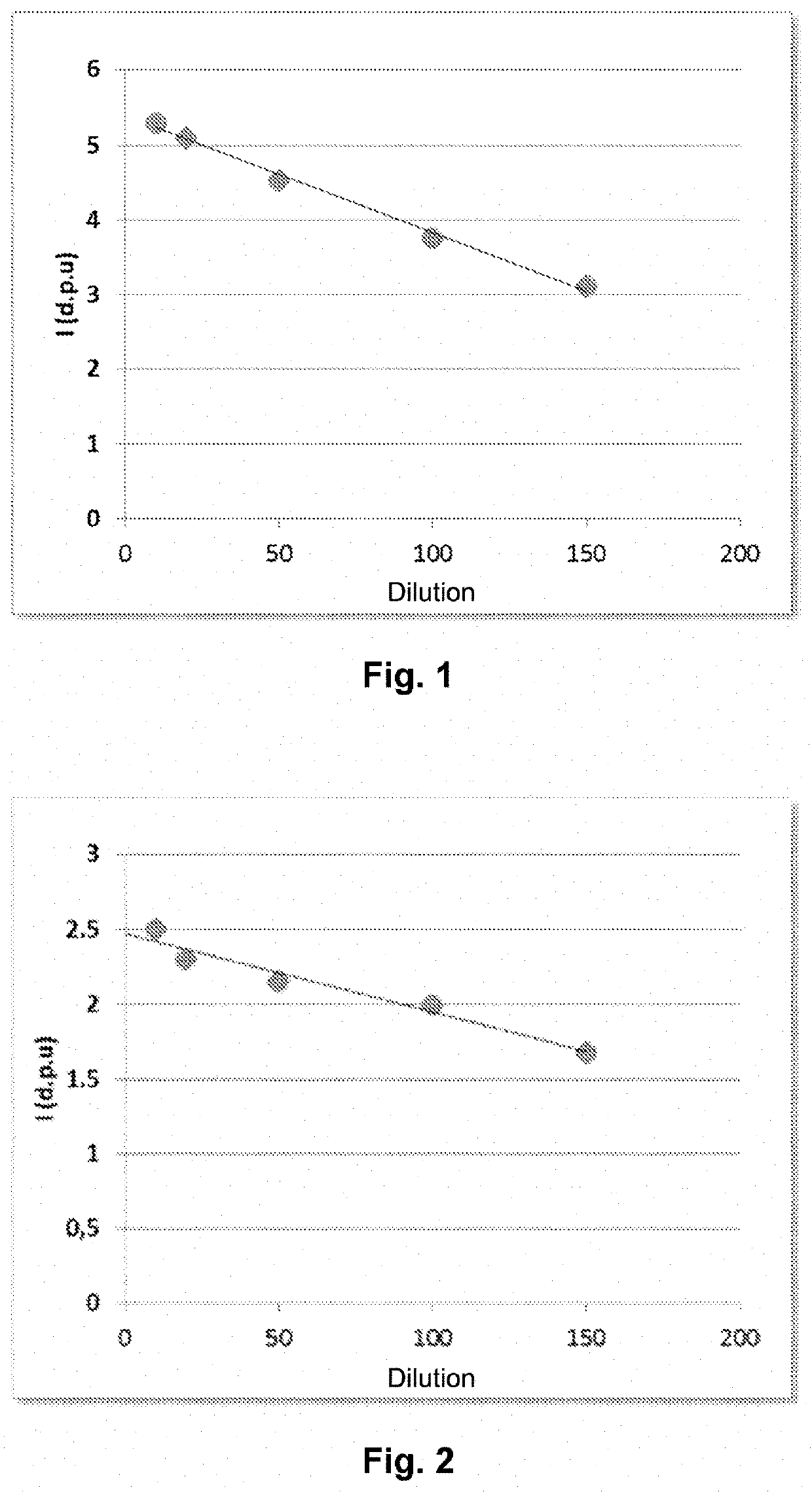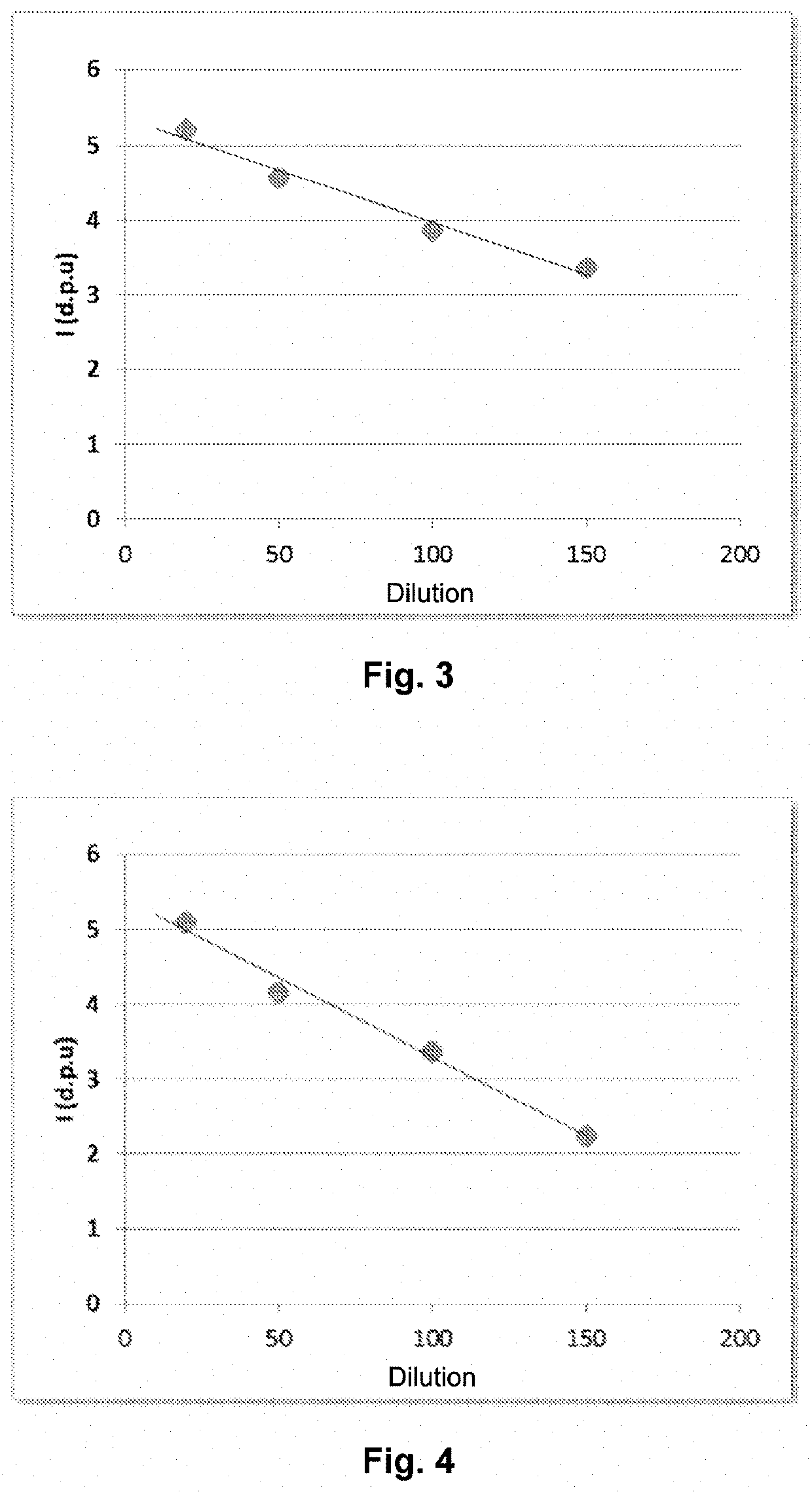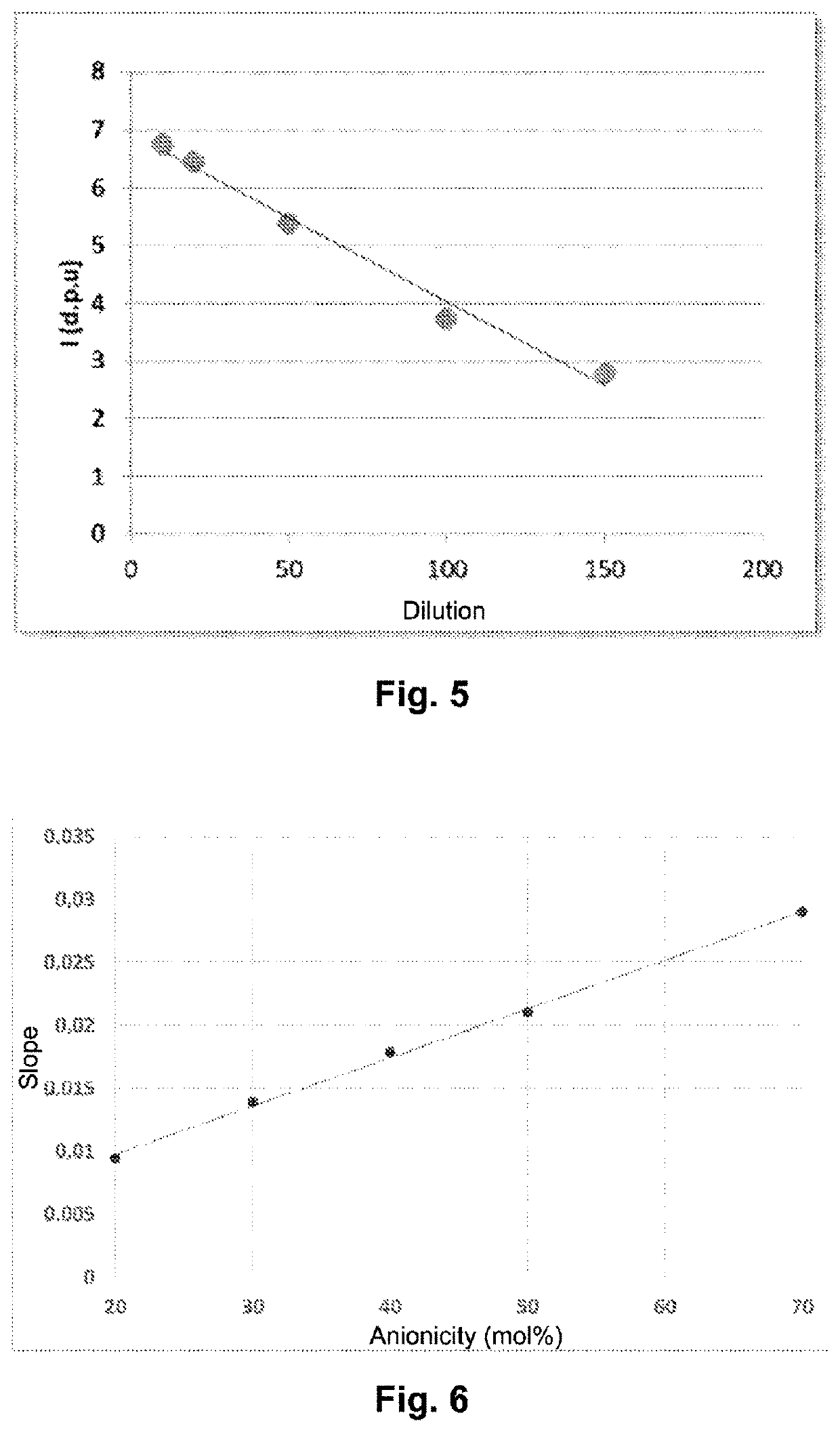Method for determining the anionic charge density of a polymer
- Summary
- Abstract
- Description
- Claims
- Application Information
AI Technical Summary
Benefits of technology
Problems solved by technology
Method used
Image
Examples
example 1
ng the Anionicity of a Polymer Present in Industrial Water
[0073]This example concerns the determination of the anionicity of an acrylamide / sodium acrylate polymer present in production water coming from oil production from reservoirs that use enhanced oil recovery techniques that inject a polymer-based solution.
a) Preparation of Control Solutions
[0074]The following solutions of various unknown concentrations are prepared by successively diluting a polymer stock solution with water that has the same salinity as the production water to be analyzed (Table 1).
[0075]The salinity of the production water is:
[0076]NaCl concentration: 25.00 g·L−1
[0077]CaCl2) concentration: 1 g·L−11
[0078]A brine is prepared in such a way as to obtain the same salinity characteristics as the production water. This brine is used for diluting the various solutions.
b) Interaction with Developer Solutions
[0079]Each of the solutions listed in Table 1 is mixed with a developer solution of Terbium III Chloride sold...
example 2
ng the Anionicity of a Polymer Present in a Drilling Fluid
[0101]This example concerns the determination of the anionicity of an anionic polymer of unknown composition present in drilling fluid collected at the outlet of producing oil wells.
a) Equipment & Measurements
[0102]Photoluminescence measurements are made at room temperature in a quartz cuvette on a spectrometer like the Cary Eclipse Fluorescence Spectrophotometer from Agilent. The characteristics are identical to those in Example 1.
[0103]The excitation spectra of the samples are performed between 200 and 450 nm and the emission wavelength λem is 617 nm.
[0104]The measurement parameters are set as follows:[0105]Time: 0.5 ms[0106]Photon collection time: 2 ms[0107]Lamp frequency: 100 Hz[0108]Number of flashes: 1
[0109]The analysis is started using the software controlling the spectrofluorometer.
b) Preparation of Control Samples & Excitation Spectra
[0110]The following solutions of various unknown concentrations are prepared by succ...
example 3
the Sensitivity of the Anionicity Determination of a Copolymer
[0117]This example concerns the use of operating conditions to improve the sensitivity and resolution of the anionicity determination measurement of an acrylamide / sodium acrylate copolymer present, for example, in petroleum production water from reservoirs that use enhanced polymer-based oil recovery techniques or in a drilling fluid.
a) Time-Resolved Luminescence Measurement
[0118]Measurements are made at 20° C. in a quartz cuvette on a spectrometer like the Cary Eclipse Fluorescence Spectrophotometer from Agilent with the following characteristics:[0119]75 kW Xenon flash lamp[0120]Czerny-Turner monochromators[0121]PM detector at 800 V[0122]Δpulse=2 μs
[0123]The excitation spectra of the samples are performed between 200 and 450 nm. The emission wavelength is λem=617 nm.
[0124]The measurement parameters are set as follows:[0125]Time: 0.5 ms[0126]Photon collection time: 2 ms[0127]Lamp frequency: 100 Hz[0128]Number of flashes:...
PUM
 Login to View More
Login to View More Abstract
Description
Claims
Application Information
 Login to View More
Login to View More - R&D
- Intellectual Property
- Life Sciences
- Materials
- Tech Scout
- Unparalleled Data Quality
- Higher Quality Content
- 60% Fewer Hallucinations
Browse by: Latest US Patents, China's latest patents, Technical Efficacy Thesaurus, Application Domain, Technology Topic, Popular Technical Reports.
© 2025 PatSnap. All rights reserved.Legal|Privacy policy|Modern Slavery Act Transparency Statement|Sitemap|About US| Contact US: help@patsnap.com



